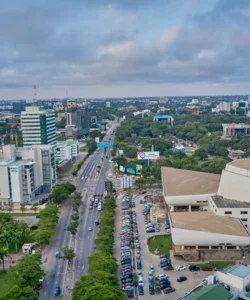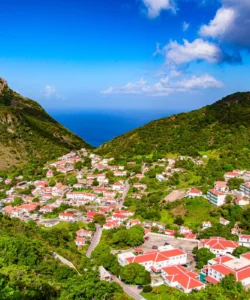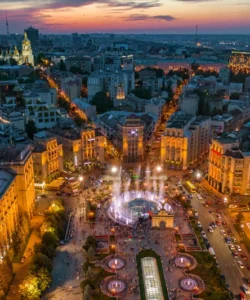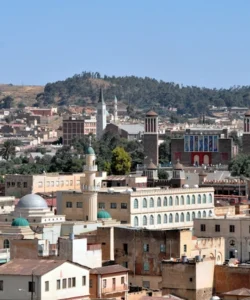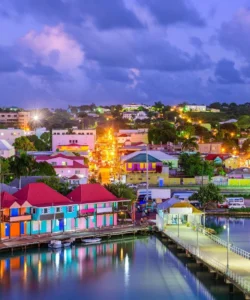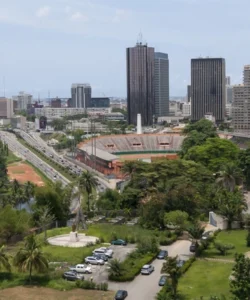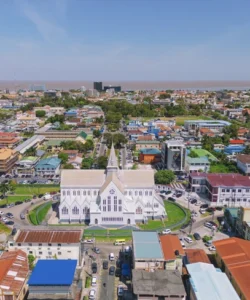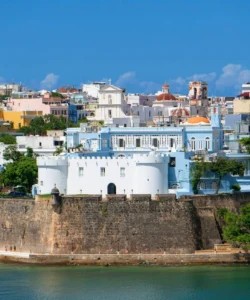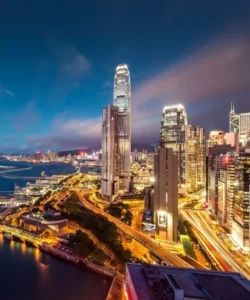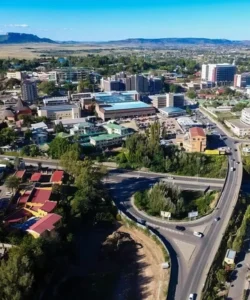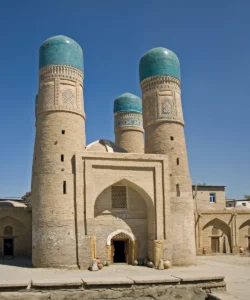Thailand, officially the Kingdom of Thailand, is a Southeast Asian country known for its tropical beaches, opulent royal palaces, ancient ruins, and ornate temples displaying figures of Buddha. It’s a vibrant nation offering a diverse range of experiences for travelers.
![]()
Area: Approximately 513,120 square kilometers (198,120 sq mi).
Population: As of 2025, the estimated population is around 71.95 million.
Language: The official language is Thai (Central Thai).
Currency: The official currency is the Thai Baht (THB).
Religion: The predominant religion is Buddhism, with over 94% of the population identifying as Buddhist (primarily Theravada Buddhism). There are also significant Muslim and Christian minorities.
Capital: Bangkok, also known as Krung Thep Maha Nakhon or simply Krung Thep, is the capital and most populous city.
Major Cities: Besides Bangkok, other major cities include Samut Prakan, Chon Buri, Nonthaburi, Nakhon Ratchasima, Songkhla, Udon Thani, Chiang Mai, Khon Kaen, and Pathum Thani.
Attractions & Wonders:
- Bangkok:
- The Grand Palace & Wat Phra Kaew (Temple of the Emerald Buddha): A magnificent complex of buildings, formerly the official residence of Thai kings, housing the revered Emerald Buddha.
- Wat Arun (Temple of Dawn): A stunning riverside temple with intricate porcelain decorations, especially beautiful at sunset.
- Wat Pho (Temple of the Reclining Buddha): Home to a massive 46-meter-long reclining Buddha covered in gold leaf, and known as Thailand’s first center of traditional Thai massage.
- Chinatown (Yaowarat Road): A bustling district famous for its vibrant street food scene, traditional markets, and gold shops.
- Chatuchak Weekend Market: One of the world’s largest weekend markets, offering everything from clothing to antiques and street food.
- Khao San Road: A well-known hub for backpackers with lively bars, restaurants, and street vendors.
- Chiang Mai:
- Wat Phra That Doi Suthep: A sacred temple located on a mountaintop, offering panoramic views of the city.
- Old City Temples: Explore ancient temples like Wat Chedi Luang and Wat Phra Singh.
- Elephant Nature Park: A renowned sanctuary for rescued elephants, promoting ethical tourism.
- Night Bazaar: A popular market for local crafts, souvenirs, and street food.
- Phuket: Known for its stunning beaches, clear waters, and vibrant nightlife.
- Patong Beach: A popular and lively beach.
- Big Buddha: A giant white marble Buddha statue offering panoramic views.
- Ayutthaya:
- Ayutthaya Historical Park: The ruins of the former capital of the Ayutthaya Kingdom, a UNESCO World Heritage Site, famous for its ancient temples and Buddha statues, including the iconic Buddha head entwined in tree roots at Wat Mahathat.
- Krabi: Famous for its dramatic limestone cliffs, emerald waters, and beautiful islands.
- Railay Beach: A stunning beach accessible only by boat, popular for rock climbing.
- Ao Nang: A lively beach town and a gateway to island hopping tours.
- Ko Phi Phi: An island paradise known for its breathtaking bays, including the famous Maya Bay (reopened with limited entry for conservation).
- Kanchanaburi:
- Bridge on the River Kwai: A historic railway bridge associated with World War II.
- Erawan Waterfalls: A beautiful seven-tiered waterfall in a national park.
- Hellfire Pass Memorial Museum: A poignant reminder of the Death Railway’s construction.
- Natural Wonders:
- Doi Inthanon National Park: Home to Thailand’s highest peak, known for its diverse wildlife and beautiful waterfalls.
- Phang Nga Bay: Famous for its dramatic limestone karsts rising from the sea, including the iconic “James Bond Island” (Ko Ping Kan).
- Khao Yai National Park: Thailand’s first national park, a primarily grassy plateau with tropical forests and diverse wildlife.
- Erawan National Park: Features the stunning seven-tiered Erawan Waterfall.
Architecture:
Thai architecture is deeply rooted in Buddhist traditions and beliefs. A universal aspect is the elevation of buildings on stilts, often for flood protection and to create usable space beneath. Traditional houses are often made from wood or bamboo, sometimes assembled from prefabricated panels. They frequently feature a cluster of separate rooms around a central terrace, with openings for trees to grow through, providing shade. Temples (wats) are particularly ornate, characterized by multi-tiered roofs, gilded spires, and intricate carvings. Many structures are designed with attention to symbolic elements and local superstitions.
Roads:
Thailand has a well-developed road network connecting major cities and tourist destinations.
- Khao San Road (Bangkok): A world-famous backpacker hub.
- Yaowarat Road (Bangkok): The main street in Bangkok’s Chinatown, known for its vibrant atmosphere and street food.
- Charoenkrung Road (Bangkok): A historic road along the Chao Phraya River, featuring old European-inspired architecture and a burgeoning creative scene.
- Silom Road (Bangkok): A major financial and commercial district, also known for its nightlife.
Hotels: Thailand offers a wide range of accommodation, from luxury resorts to budget guesthouses. Some renowned luxury hotels include:
- Rosewood Phuket
- The Peninsula Bangkok
- Four Seasons Hotel Bangkok at Chao Phraya River
- Six Senses Samui
- Trisara (Phuket)
- Mandarin Oriental Bangkok
- Amanpuri (Phuket)
Restaurants & Cuisine: Thai cuisine is globally celebrated for its balance of sweet, salty, spicy, sour, and umami flavors. Key ingredients include lemongrass, galangal, kaffir lime leaves, chili, and coconut milk. Street food is a highlight of the Thai culinary experience.
- Typical Dishes:
- Pad Thai: Stir-fried rice noodles with shrimp, chicken, or tofu, seasoned with a mix of sweet, sour, and spicy flavors.
- Tom Yum Goong: A spicy and sour soup with shrimp, mushrooms, lemongrass, and kaffir lime leaves.
- Som Tam: A spicy green papaya salad.
- Green Curry (Gaeng Keow Wan): A thick, spicy curry made with coconut milk, green chilies, and various meats or vegetables.
- Massaman Curry: A milder, fragrant curry with Indian influences, often made with beef.
- Pad Kra Pao: Thai basil stir-fry with minced meat, typically served over rice with a fried egg.
- Sticky Rice with Mango (Khao Niew Mamuang): A popular dessert of steamed glutinous rice with fresh mango and sweet coconut sauce.
- Famous Restaurants:
- Street food stalls: Found virtually everywhere, offering delicious and affordable options (e.g., Yaowarat Road in Bangkok).
- Sorn (Bangkok): Known for southern Thai cuisine.
- Le Du Restaurant (Bangkok): Modern Thai cuisine with Michelin stars.
- Blue Elephant (Phuket/Bangkok): Royal Thai cuisine in a colonial setting.
- Cabbages & Condoms (Bangkok): A unique restaurant supporting family planning initiatives.
Annual Travel:
The best time to visit Thailand is generally from November to February, when most of the country experiences cooler and drier weather. However, if you are planning to visit the Gulf of Thailand (e.g., Koh Samui), the best time is from April to September, as this region experiences its dry season when other parts of the country might be in monsoon season.
















































